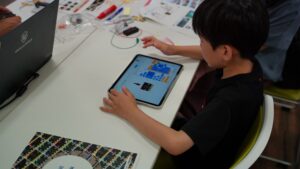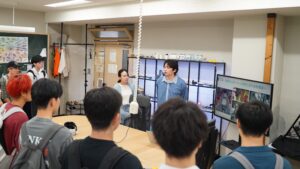Report on Invited Talk: Appearance on Morphological Computation (YouTube)
Takuya Umedachi of the Umedachi Laboratory, Shinshu University, was invited to speak on the YouTube channel Morphological Computation, delivering a talk titled “Emergence Through Conflict — Morphological Computation in Decentralized Robotic Systems.” The recording (“MorphoTalks – Dr. Takuya Umedachi”) is available on the channel. (The talk begins at 32:55.)
About the Channel (Morphological Computation)
The channel is run by the Morphological Computation Group at the University of Bristol (affiliated with the Bristol Robotics Laboratory). It hosts the seminar series MorphoTalks, which focuses on the intersection of embodiment and intelligence—covering topics such as morphological computation (MC), embodied intelligence, soft robotics, and reservoir computing.
Past speakers include leading figures in the field, such as Prof. Fumiya Iida (University of Cambridge), Prof. Josh Bongard (University of Vermont), and Prof. Sabine Hauert (University of Bristol).
What is Morphological Computation?
Morphological computation is the idea that the body (morphology), materials, and environment collaborate with control (brain/algorithms) to perform “computation,” thereby contributing to the generation of intelligent behavior.
- Key point: Behavior is not solely a product of the brain (control). There is a task distribution among morphology, material properties, sensor placement, and interactions with the environment.
- Classic introduction: Rolf Pfeifer & Josh Bongard, How the Body Shapes the Way We Think (MIT Press). This book provides a historical and case-based account of how embodiment both constrains and enables intelligence. Prof. Pfeifer has also given a TEDx talk on this topic.
Highlights from the Invited Talk
Overview: The talk discussed how order can emerge through “conflict” in decentralized robotics and the role of morphological computation in that process. Using our own research as case studies, we introduced mechanisms by which module–module interactions, local feedback, and mechanical interactions (arising from environmental and material properties) can drive transitions among diverse motion modes and functions without centralized control. We also presented laboratory projects developed from the same perspective and reframed cross-disciplinary insights from soft robotics and decentralized control as design principles for the body × control × environment triad. (For details, please see the archived video.)
Related Links
- Morphological Computation (YouTube channel) — Official channel of the Bristol MC Group
- MorphoTalks (official site) — Series overview and speaker list
- Book: How the Body Shapes the Way We Think (MIT Press) — An introductory text on morphological computation and embodiment


